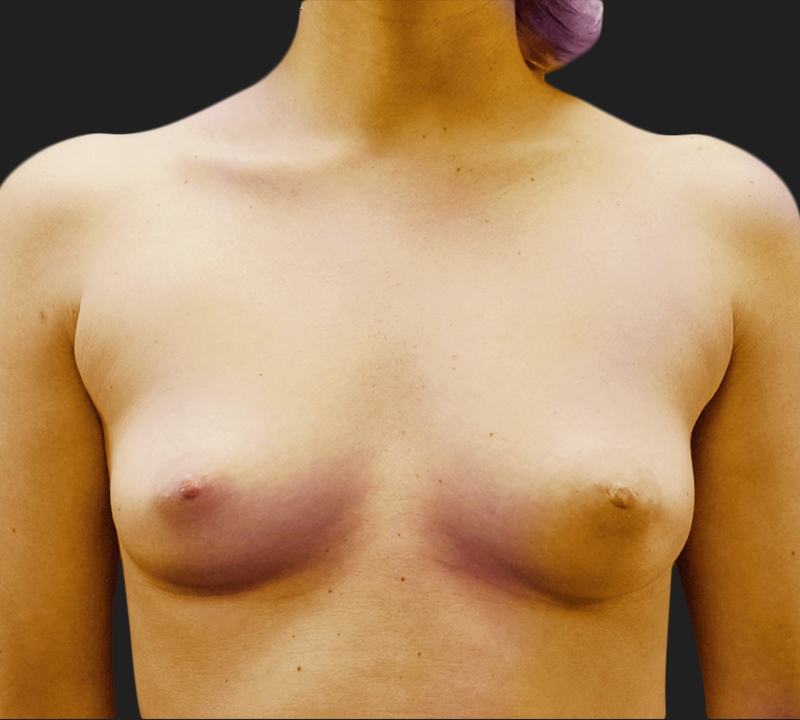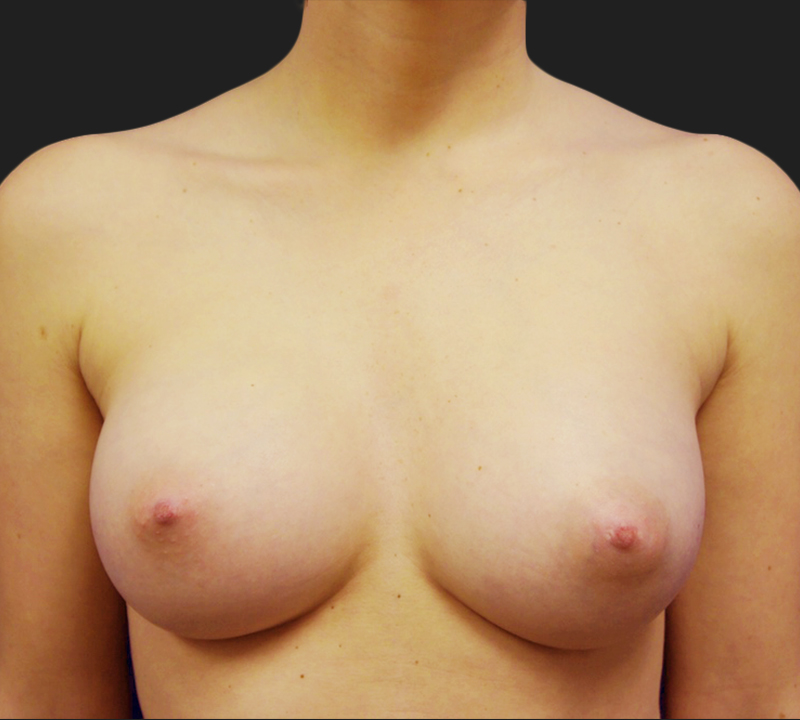TUBA (Transumbilical) Breast Augmentation
Transumbilical Breast Augmentation (TUBA) is the breast augmentation technique when breast implants are placed through an incision in the belly button, leaving no visible scars on the body. This method of breast augmentation is associated with minimal pain and a faster recovery. read more

Is TUBA Breast Augmentation Right For You?
The TUBA method is used only with saline implants, as only saline implants can be inserted through a long subcutaneous tunnel extending from the belly button to the breasts. Initially, this method didn’t allow surgeons to place implants behind the muscle, but as the technique was refined, it became possible to place implants in any position chosen by the surgeon.
TUBA breast augmentation is also called “scarless breast augmentation” because the incision is made in the natural folds of the belly button. TUBA breast augmentation (like any other breast augmentation procedure done at Aristocrat) is performed under general anesthesia.
read more
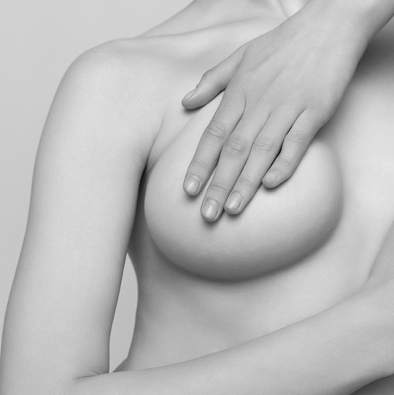
Who Is A Candidate for TUBA Breast Augmentation?
If you desire to increase the size of your breasts, you might be a candidate for transumbilical breast augmentation. The only way to find out, however, is through a consultation with Dr. Tehrani. After an examination and listening to how you wish your breasts to look, he can determine if the TUBA technique would work for you. It is not suitable for all breast augmentation patients. The Ideal patient is one who has some breast volume and does not wish to be very large.
Are you a good candidate for saline implants and TUBA breast augmentation? It depends on your anatomy, aesthetic goals, and some other factors. To determine if TUBA is right for you, consider the following factors:
- Desire for Minimal Scarring: If you’re concerned about visible scars on your breasts and want a virtually scarless outcome, TUBA is worth considering. The incision is hidden within the navel, making it an excellent choice for those who set minimal scarring as a priority.
- Suitability for Saline Implants: TUBA primarily uses saline implants. If you prefer saline to silicone implants, TUBA is a great option. Dr. Tehrani can discuss the benefits and limitations of saline implants during your consultation.
- Size and Shape Goals: TUBA is suitable for individuals looking for modest to moderate breast size increases. If you desire a significant change in breast size or shape, other breast augmentation techniques may be more appropriate.
- Health Considerations: As with any surgery, your overall health plays a crucial role in determining if you’re a good candidate for TUBA. You should be in good physical health, a non-smoker, and have realistic expectations about the procedure's outcomes.
- Consultation with a Board-Certified Plastic Surgeon: The most crucial step in determining if TUBA is right for you is to consult with a board-certified plastic surgeon such as Dr. Tehrani, who specializes in breast augmentation procedures. He will assess your specific needs, goals, and medical history to help you make an informed decision.
At Aristocrat Plastic Surgery, we also use VECTRA 3D imaging so that you can try different implant sizes and shapes by seeing an image of exactly how you will look after your surgery. Schedule your breast augmentation consultation today to discuss which breast augmentation method is best in your particular case.
read more

Breast implants come in many shapes and sizes. All breast implants have an outer pliable envelope (or shell). The contents of the envelope are used to achieve fullness and create the most natural breast-like feeling possible. For the TUBA technique, the implants are filled with saline (salt water) after the shell has been inserted.
The implant shapes are generally round, oval, or contoured. The surface of the implants can be smooth to the touch or textured. Dr. Tehrani will also discuss these options with you. Here’s a list of different types of breast implants that are available that might be right for you:
- Saline Breast Implants: These implants are filled with sterile salt water after placement, which allows for adjustments in size during the surgery. They are known for their safety, as any leakage is easily noticeable. However, some patients find them less natural in texture compared to silicone implants.
- Silicone Gel Breast Implants: These implants are pre-filled with a silicone gel that closely mimics the feel of natural breast tissue. Silicone implants offer a more natural appearance and are less likely to ripple or wrinkle. In the event of a rupture, the gel may not be immediately detectable, necessitating regular monitoring with an MRI.
- Gummy Bear Implants: These are a type of highly cohesive silicone gel implant. They are known for their teardrop shape, which closely resembles the natural breast. Gummy bear implants maintain their shape even if they rupture, making them a popular choice for those seeking long-term results.
- Round Breast Implants: These are filled with either saline or silicone gel and are known for their symmetrical, round shape. Round implants provide fullness and cleavage, making them a popular choice for patients looking for enhanced volume and projection.
- Textured vs. Smooth Implants: Both saline and silicone implants can be either textured or smooth. Textured implants are less likely to shift within the breast pocket and are often chosen for patients who want a more stable implant. Smooth implants, on the other hand, have a softer feel and may provide a more natural appearance.
- Implant Sizes: Implants come in various sizes, measured in cubic centimeters (cc). The choice of size depends on the patient's body frame, breast width, and personal aesthetic goals. It's important to work closely with Dr. Tehrani to determine the ideal size for your body.
- Implant Profile: Implants come in different profiles, such as low, moderate, high, or extra-high. The profile affects the amount of projection and fullness the implant provides. The choice of profile should align with your desired breast shape and overall body proportions.
Each type of implant has its advantages and limitations, and Dr. Tehrani will guide you in making an informed decision that best suits your needs, resulting in a successful and satisfying breast augmentation experience.
read more
Types of Breast Implants
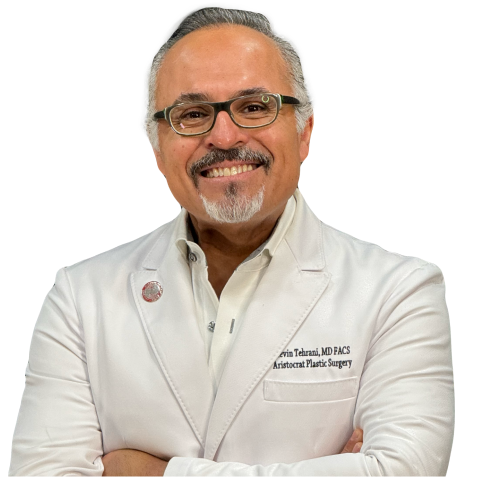
Meet Dr. Kevin Tehrani, MD FACS
The TUBA Procedure
Here’s a step-by-step description of the TUBA breast augmentation procedure:
- Preoperative Evaluation: The first step in a TUBA procedure is a thorough evaluation by Dr Tehrani. During this consultation, you will discuss your goals, medical history, and any questions or concerns you may have.
- Anesthesia: TUBA procedures are typically performed under general anesthesia, ensuring your comfort and safety throughout the procedure.
- Incision: Dr. Tehrani makes a small incision within the navel, hiding any potential scars effectively. This incision site is then used to create a tunnel through which the implant will be placed.
- Implant Placement: A special instrument called an endoscope, along with surgical instruments, is used to create a pocket for the implant beneath the breast tissue or muscle, depending on the patient's preference and anatomy.
- Implant Insertion: The breast implant is rolled up and inserted through the tunnel, guided by Dr. Tehrani’s expertise until it reaches its final position.
- Implant Positioning: Once the implant is in place, the surgeon ensures it is centered, symmetrical, and in the ideal position for the desired outcome.
- Closure: The incision is carefully closed, and patients typically leave the operating room with no external scarring on their breasts.
The transumbilical breast augmentation (TUBA) procedure can be used to place the implants over the muscle or under the muscle. There are advantages to each, and Dr. Tehrani will discuss these options with you during your consultation.
read more
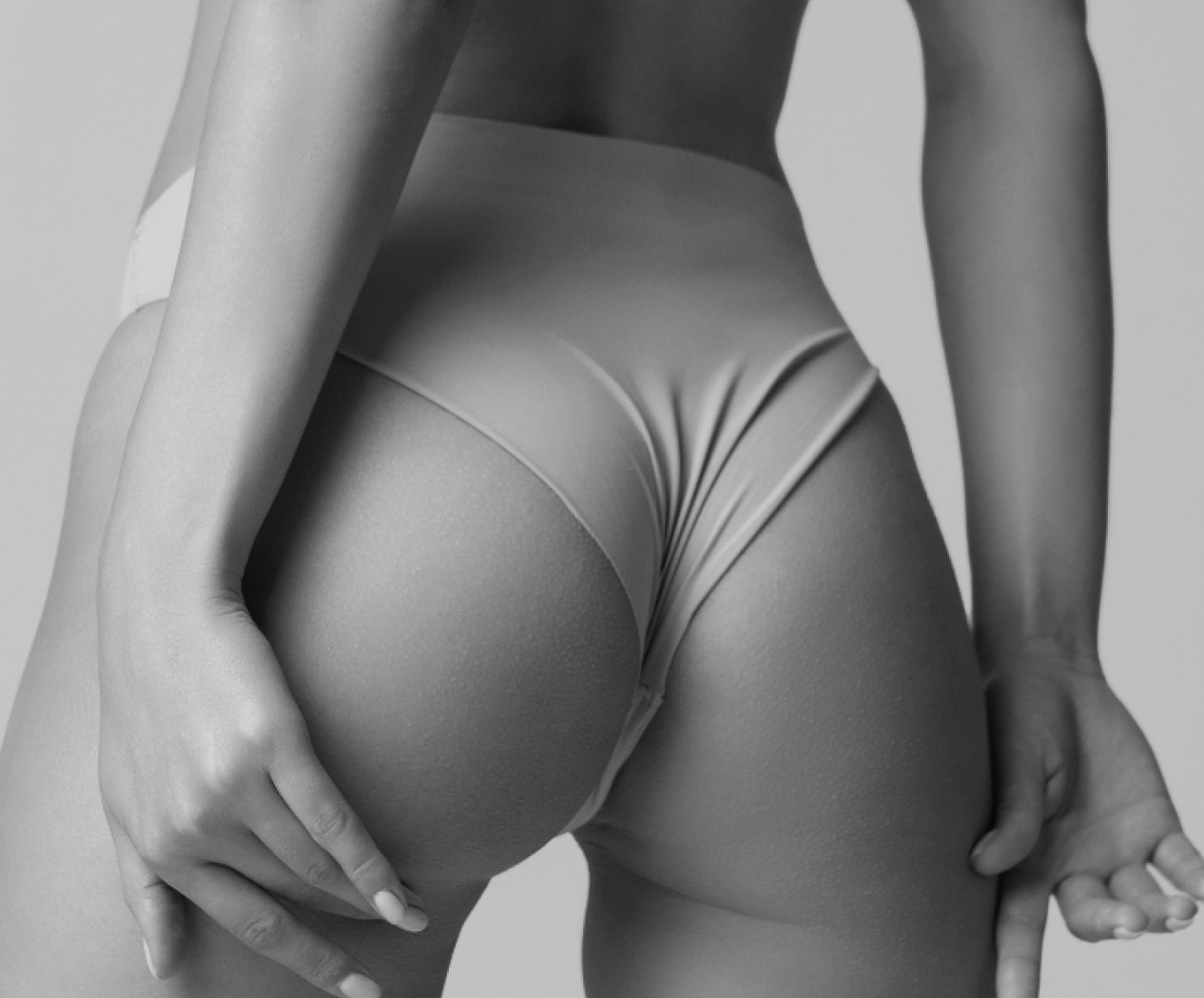
TUBA Recovery
After your surgery, you will experience some swelling, bruising, tightness, and soreness, although the amount of discomfort in the breast area is less than with a traditional breast augmentation. You will have some slight soreness at the incision site in the navel as well. We will provide you with full post-op instructions for washing your stitches and when to come back to our office for follow-up appointments.
Recovery from TUBA surgery typically involves the following:
- Immediate Post-Operative Period: After the TUBA procedure, patients are closely monitored in the recovery area to ensure their safety. The effects of anesthesia will gradually wear off during this time.
- Pain Management: Patients may experience some discomfort or pain, which is usually managed with prescription or over-the-counter pain medications, as recommended by Dr. Tehrani.
- Swelling and Bruising: Swelling and bruising around the breast area are common after surgery. These side effects usually peak within the first few days and gradually subside over the following weeks.
- Dressing and Support Bra: Patients will be provided with a special support bra or bandage to wear immediately after surgery. This helps reduce swelling and supports the healing process.
- Limited Activity: Patients are advised to limit physical activity, especially in the first week or two. This includes avoiding heavy lifting and strenuous exercise.
- Stitches or Sutures: Dr. Tehrani may use dissolvable sutures or sutures that need to be removed in a follow-up appointment, typically within a week or two.
- Return to Normal Activities: Most patients can return to light daily activities within a week, but it may take several weeks to fully resume normal physical activities and exercise.
- Scarring: TUBA surgery leaves a small incision scar within the navel, which is generally well-concealed. Over time, this scar should become less noticeable.
- Follow-up Appointments: Patients will have several follow-up appointments with Dr. Tehrani to monitor healing progress and address any concerns or questions.
- Long-Term Recovery: The full recovery period for a TUBA procedure can vary from person to person, but it may take several months for the breasts to settle into their final position and for any residual swelling to completely subside.
Patients should closely follow Dr. Tehrani’s post-operative care instructions and attend all scheduled follow-up appointments to ensure a smooth and successful recovery from the TUBA procedure.
read more
Contact Us
"*" indicates required fields
Frequently
Asked Questions
What is TUBA?
A technique inserting saline implants through a small incision in the belly button, leaving no scars on the breast.
Are silicone implants used with TUBA?
Typically, TUBA is best suited for saline implants due to the insertion method. Silicone use is limited.
Is TUBA safe?
When performed by a skilled surgeon, it’s safe. However, it’s more technically complex and not offered by all surgeons.
How long is the recovery?
Similar to traditional augmentation, with many patients resuming light activities in about a week.
Are results comparable to other breast augmentation methods?
Yes, when properly performed. The main difference is the belly-button incision site.


